I’ve always seen mashed potatoes as the ultimate comfort food, but I’ll admit, there have been times when I’ve found myself ready to cook with no potato masher in sight.
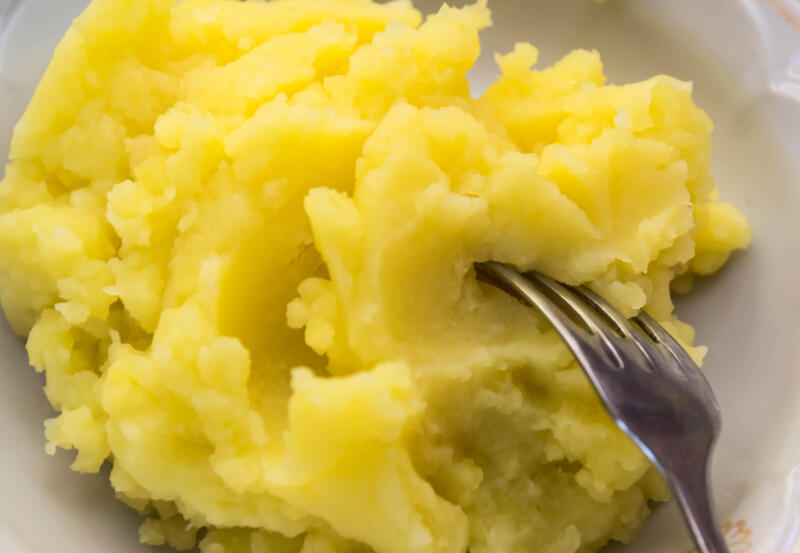
It was a bit of a culinary curveball, but it taught me that necessity truly is the mother of invention.
Through a bit of creativity and some kitchen experimentation, I discovered that there are plenty of ways to achieve that perfect, creamy mash without the traditional tool.
It’s been a game-changer in my cooking routine, and I’m excited to share some of the methods and insights I’ve learned along the way.
Highlights
- Versatility of Kitchen Tools: I was surprised to find that many tools I already had could double as effective potato mashers. From forks and whisks to even a sturdy glass, these alternatives not only worked but also offered unique textures and consistencies to my mashed potatoes.
- Texture Control: Without a traditional masher, I found I had more control over the texture of my mashed potatoes. Whether I wanted them smooth and creamy or with a bit more character, I could easily adjust my approach based on the tool I was using and how I applied it.
- Creative Flavoring: This journey also opened up new ways to flavor my mashed potatoes. Experimenting with different dairy products, seasonings, and even some unconventional ingredients like olive oil or garlic, I was able to elevate the humble mashed potato to a dish that stood out on its own.
In this article:
Factors to Consider When Choosing an Alternative Mashing Tool
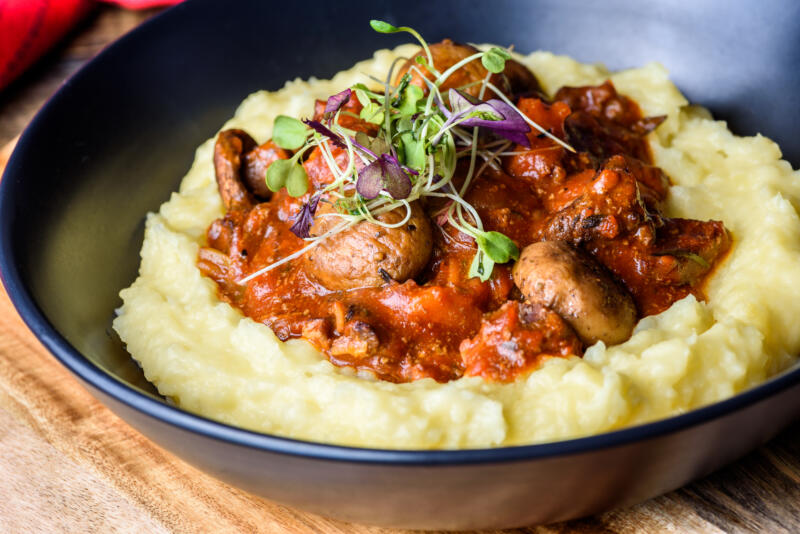
When it comes to mashing potatoes, several factors come into play that could influence your choice of method.
Potatoes’ Softness after Boiling
The hardness of your potatoes after boiling can significantly impact your mashing method.
If you find that your potatoes are still too hard after boiling, you might want to consider using a blender or another electrical tool.
These devices can handle harder potatoes with ease, ensuring a smooth mash without the extra elbow grease.
The Volume of Potatoes You Prepare
The quantity of potatoes you’re preparing also matters. For smaller portions, even a fork might suffice.
However, for larger volumes, an electrical tool like a ricer or immersion blender can save you time and effort.
Using a fork for a large volume of potatoes can be labor-intensive and time-consuming, leading to the potatoes cooling down.
If the mashed potatoes become too cold, it can be challenging to achieve the desired texture later on when incorporating ingredients like butter, cream, or milk.
The Time it Requires to be Mashed
Time efficiency is another crucial aspect. If you’re in a hurry, using an electrical tool can significantly speed up the process compared to a manual masher.
The Desired Texture
Lastly, your preferred potato texture plays a role.
For a chunkier mash, a pastry cutter, bottle, ricer, or rolling pin might be your best bet.
However, if you prefer a silky smooth texture, an immersion blender can achieve this consistency with ease.
In conclusion, the choice of mashing method depends on a balance of these factors. By considering each aspect, you can choose the method that best suits your needs and preferences.
Preparing the Potatoes
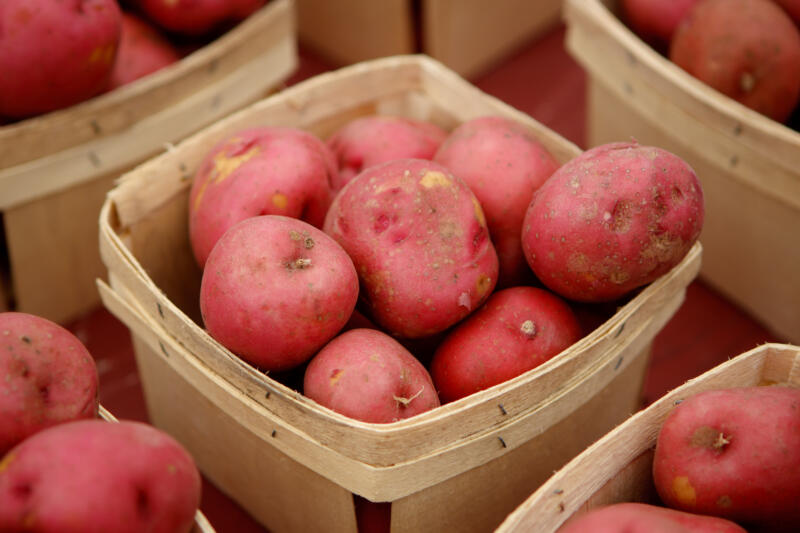
From choosing the right type of potato to the actual cooking process, each step plays a crucial role in achieving the perfect mashed potatoes. Let’s get started!
Choosing the Right Potatoes
The first step in making mashed potatoes is choosing the right type of potato.
Not all potatoes are created equal, and the type you choose can significantly impact the texture and flavor of your mashed potatoes.
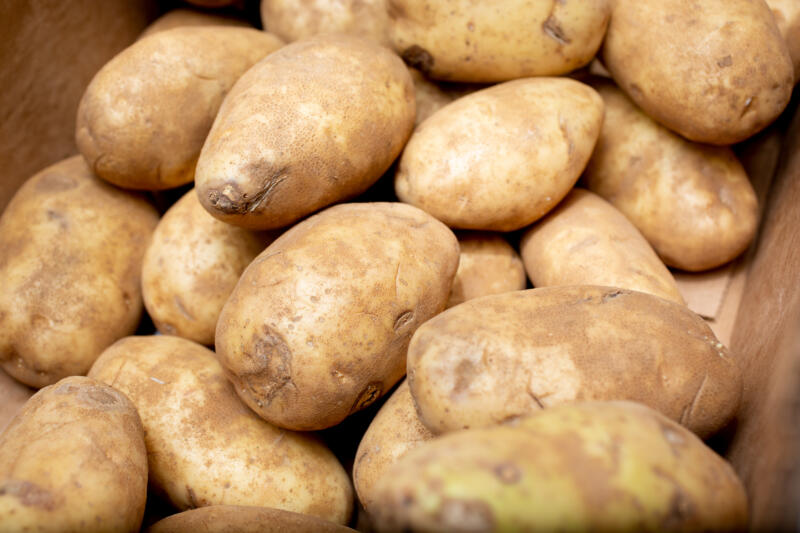
Russet potatoes, known for their starchy consistency, are a favored pick for creamy mashed potatoes.
On the other hand, if you prefer a firmer, chunkier mash, waxy potatoes like Yukon gold or red potatoes are your best bet.
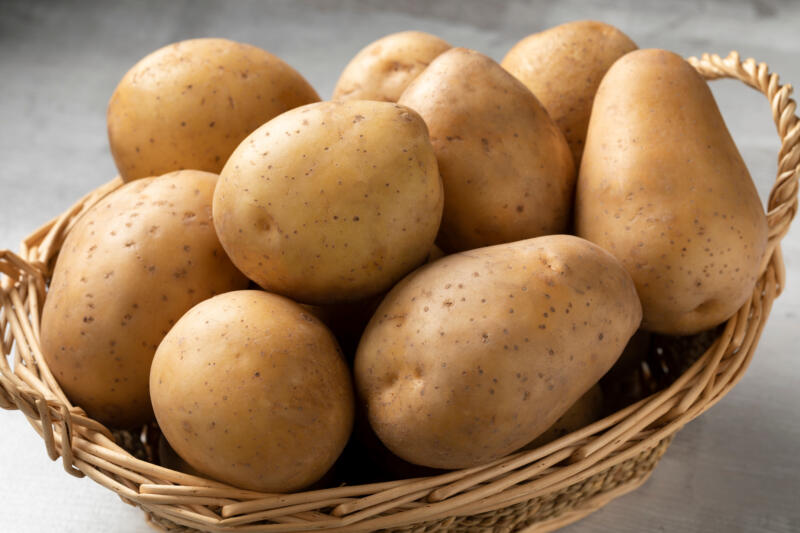
Washing and Peeling the Potatoes
Once you’ve chosen your potatoes, it’s time to get them ready for the pot.
Start by washing the potatoes thoroughly to remove any dirt or debris.
After they’re clean, you can start peeling. A vegetable peeler or a paring knife will do the trick.
However, if you’re after a rustic, homey feel, feel free to leave the skins on.
Not only does it add texture, but it also enhances the flavor of your mashed potatoes.
Cutting into Cubes or Slices
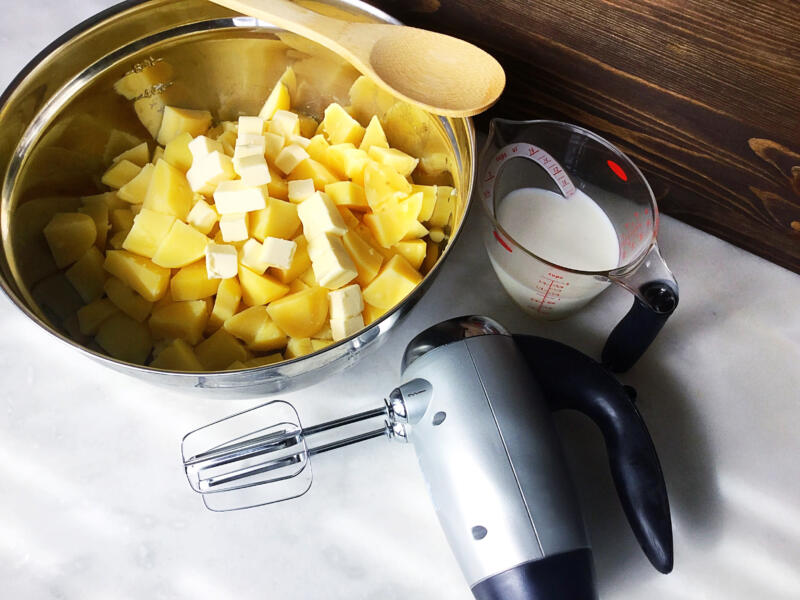
After washing and peeling comes the cutting. You can either cut them into cubes or slices, depending on your preference. This ensures that the potatoes cook evenly and become perfectly tender for mashing.
Boiling the Potatoes in Cold Water
Now that your potatoes are prepped and ready, it’s time to cook them.
Start by placing your cut potatoes in a pot of cold water. This helps them cook evenly, resulting in a soft and fluffy texture.
The recommended boiling time and temperature can vary, but a good rule of thumb is to boil until the potatoes are soft and tender.
Boiling also helps remove excess starch, leading to a smoother consistency in your final product.
Now, let’s move on to the fun part – mashing without a masher!
14 Ways to Mash Without a Masher
Who said you need a masher to make mashed potatoes?
With a little creativity and the right tools, you can achieve the perfect consistency without the traditional masher.
Whether you’re after a smooth and creamy texture or a chunkier, rustic feel, there’s a method for you.
1. Mashing with a Fork or Spoon for Chunkier Texture
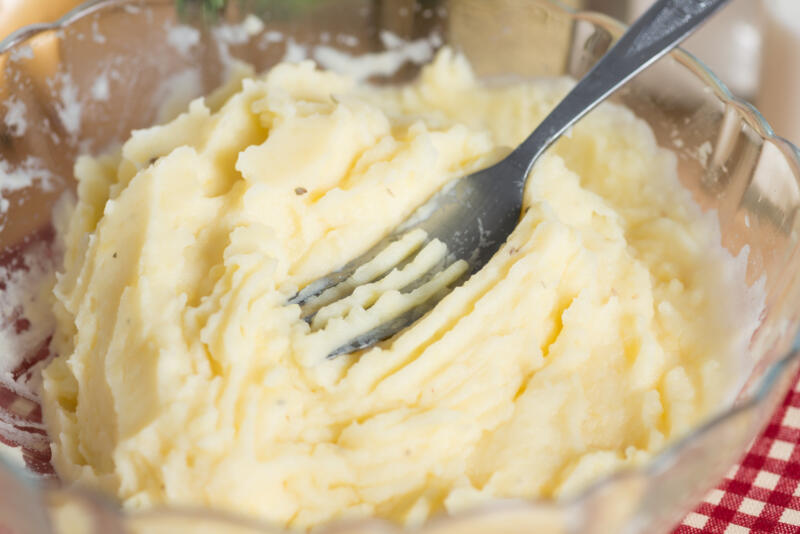
This method may not yield a perfectly smooth consistency, but it will result in a rustic, homey mash that’s full of texture and character.
However, it’s crucial to note that the type of potato chosen can significantly impact the ease of mashing and the final texture.
Some varieties of potatoes, despite being boiled for a long time, may still remain hard and can pose a challenge when mashing with a fork or spoon.
Using hard, starchy potatoes such as russets could indeed make mashing with a fork a challenging task.
Another potential drawback of using a fork for mashing, especially when dealing with a large volume of potatoes, is the time it takes.
The longer the mashing process, the more the potatoes cool down.
As the potatoes get colder, it becomes more difficult to incorporate other ingredients like butter, cream, or milk effectively.
These ingredients blend best with the potatoes when they’re still hot, helping to create a smooth, creamy texture.
If the potatoes have cooled down too much by the time you add these ingredients, they may not incorporate as well, potentially affecting the final texture and consistency of your mashed potatoes.
So, while a fork can be a useful tool for mashing, it’s important to consider these factors to ensure the best possible result.
2. Using a Potato Ricer
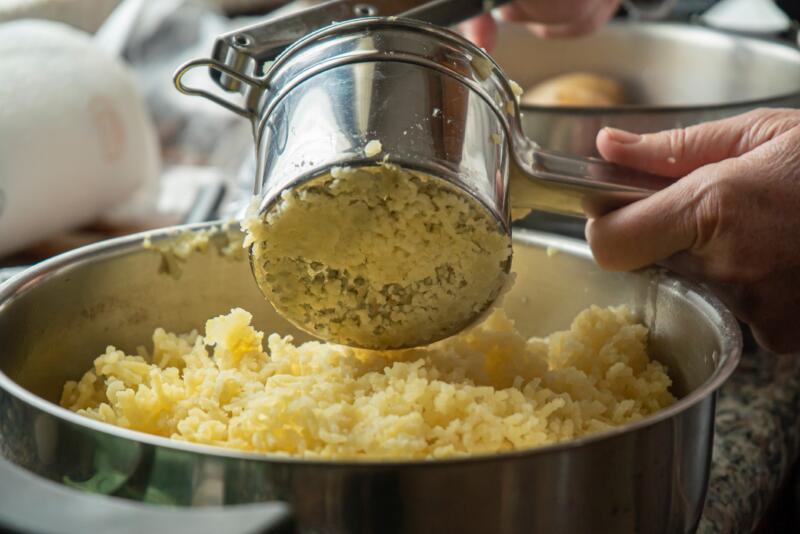
If you’re aiming for restaurant-quality mashed potatoes, a potato ricer could be a valuable addition to your kitchen toolkit.
Many professional chefs and cooking enthusiasts prefer using a potato ricer to make mashed potatoes.
A potato ricer is a kitchen tool that transforms boiled potatoes into a rice-like texture, allowing for a quick, easy mash with a smooth, creamy result.
This tool is not only used for white potatoes but also for sweet potatoes and other types.
It works by pushing the cooked potatoes through small holes, creating a rice-like texture.
The use of a ricer helps to achieve a perfect light and fluffy texture when mashed, which is often the desired outcome in professional kitchens.
3. Mashing with a Bottle
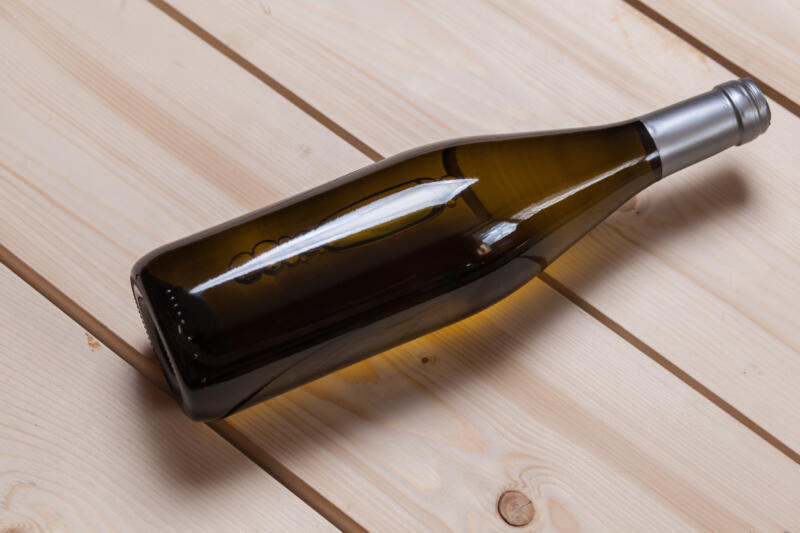
Believe it or not, a sturdy glass or plastic bottle can be a great tool for mashing potatoes.
This method is particularly useful if you’re after a less smooth, more textured consistency.
Simply cook your potatoes until they’re soft, then place them in a large bowl.
Using the bottom of the bottle, press down on the potatoes to mash them.
Continue this process until you achieve your desired consistency.
4. Mashing with a Rolling Pin
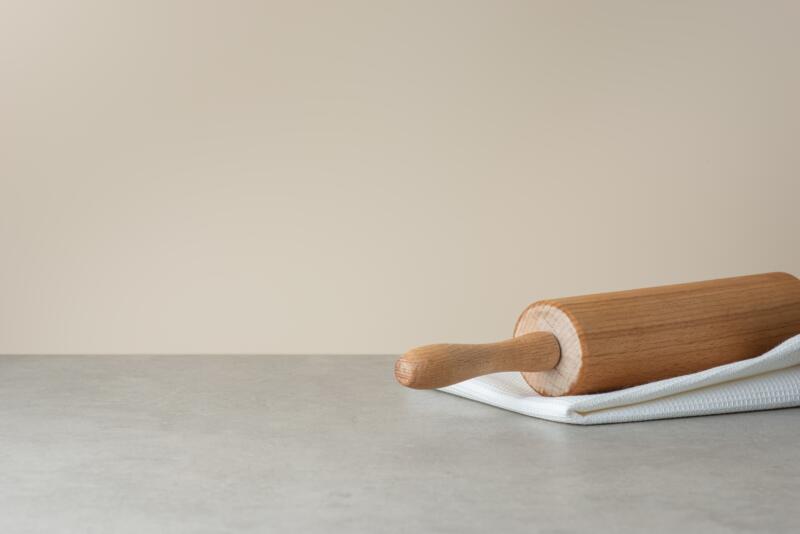
If you’re after a chunky texture, a rolling pin can be your tool of choice. This method is a bit more labor-intensive, but the results are worth it.
Start by cooking your potatoes until they’re soft. Then, transfer them to a large, flat surface (a cutting board works well).
Using your rolling pin, press down on the potatoes to mash them. Continue this process until you achieve your desired texture.
The result? Rustic, chunky mashed potatoes that are full of character.
5. Using a Grater

For a unique texture, try using a grater to mash your potatoes. This method requires a bit of caution, as overprocessing can lead to gluey potatoes.
To use a grater, cook your potatoes until they’re soft. Then, using the large holes of the grater, grate the potatoes into a bowl.
Check the texture frequently to ensure you don’t overprocess.
6. Using an Immersion Blender to Mash the Potatoes
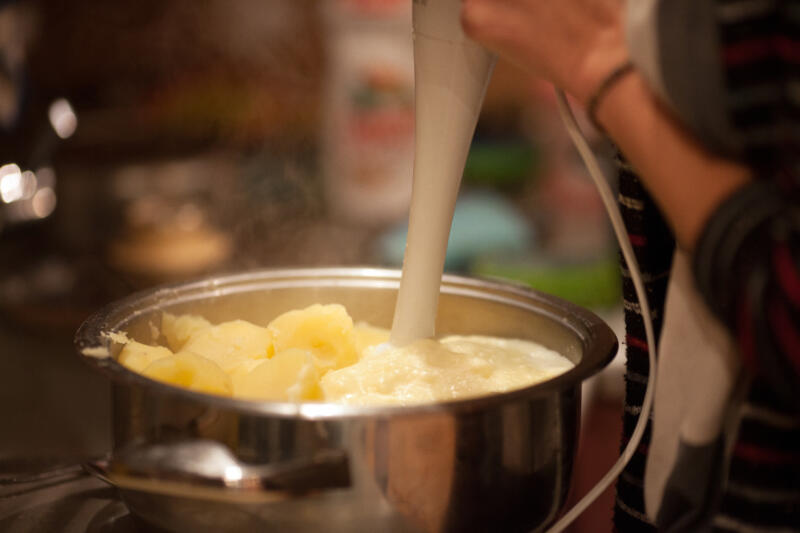
If you’re a fan of smooth and creamy mashed potatoes, an immersion blender might just become your new best friend.
This handy tool can easily break down the potatoes, giving you a silky-smooth texture.
To use it, simply cook your potatoes until they’re soft, then drain and return them to the pot.
Add your butter, milk, or cream, then use the immersion blender to blend until you reach your desired consistency.
Remember to move the blender around to ensure all the potatoes get mashed.
7. Mashing with a Pastry Cutter
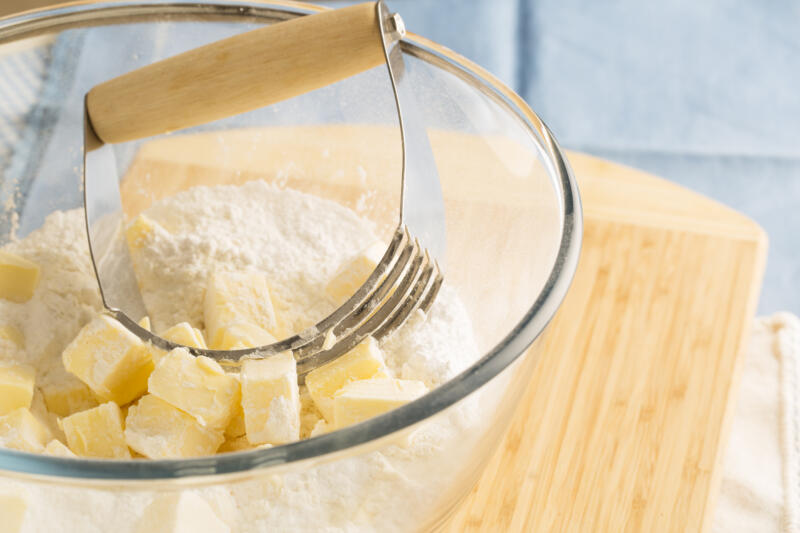
A pastry cutter is another tool that can be used to mash potatoes. It’s particularly effective if you’re after a chunky texture.
To use a pastry cutter, cook your potatoes until they’re soft. Then, place them in a large bowl and use the pastry cutter to mash them.
The result will be chunky, rustic mashed potatoes that are full of flavor and texture.
8. Using an Electric Hand Mixer for Fluffier Texture
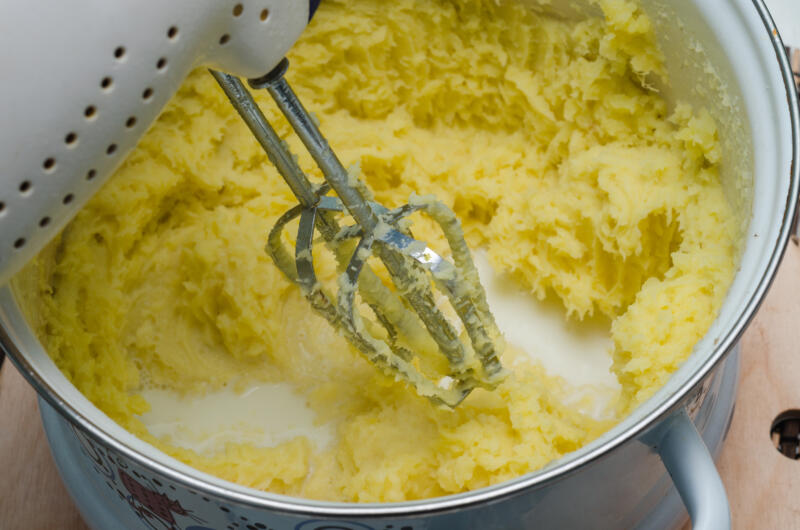
If fluffy is what you’re after, an electric hand mixer can help you achieve just that.
However, a word of caution: overmixing can lead to gluey, unappetizing potatoes.
To avoid this, start at the lowest speed and check the texture frequently.
Once the potatoes are light and fluffy, stop mixing. Remember, it’s better to undermix than overmix when it comes to mashed potatoes.
9. Mashing with a Ladle
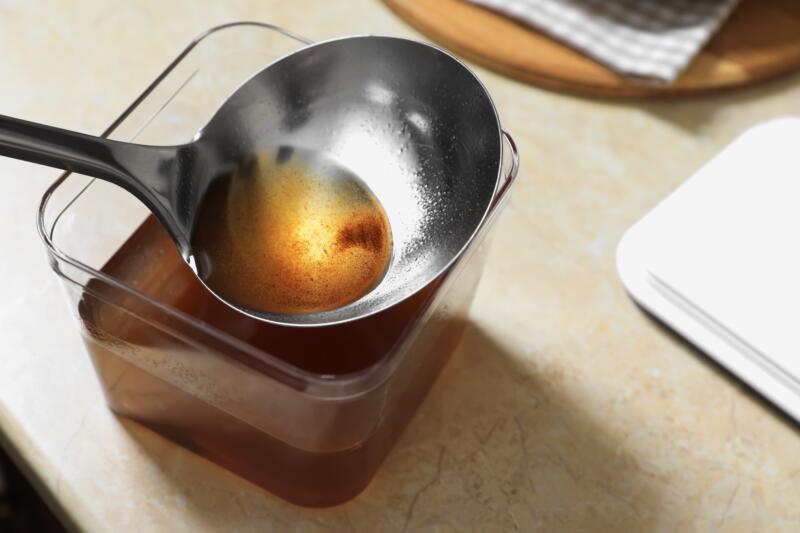
A ladle for mashing potatoes? It might sound like a punchline but don’t knock it until you’ve tried it.
This soup-serving stalwart can step up to the plate and mash with the best of them.
This method is particularly good if you’re after a chunky texture.
So, next time you’re in a mashing bind, give the humble ladle a whirl. You might be pleasantly surprised!
10. Using a Food Processor
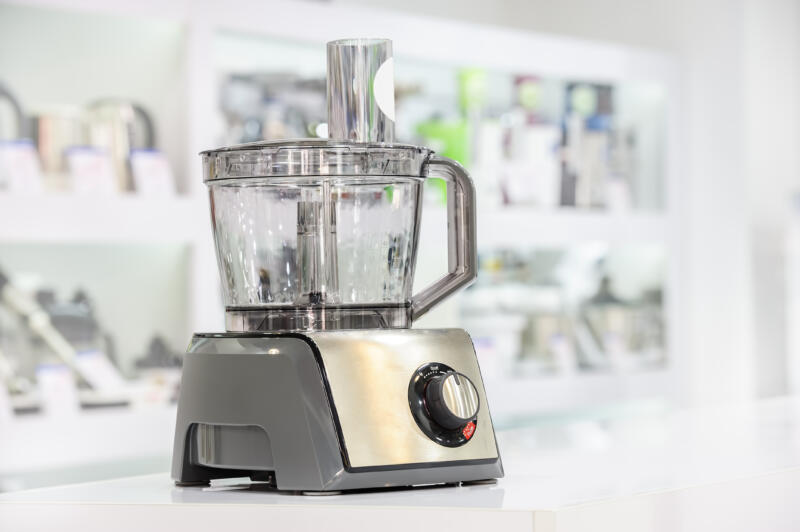
A food processor can be a quick and efficient way to mash potatoes, but caution is needed.
Overprocessing can quickly turn your potatoes into a gluey mess! To prevent this, utilize the pulse mode on your food processor.
Add your cooked potatoes to the processor and pulse until you reach the desired texture.
Remember to check the texture frequently to prevent overprocessing.
11. Using a Food Mill
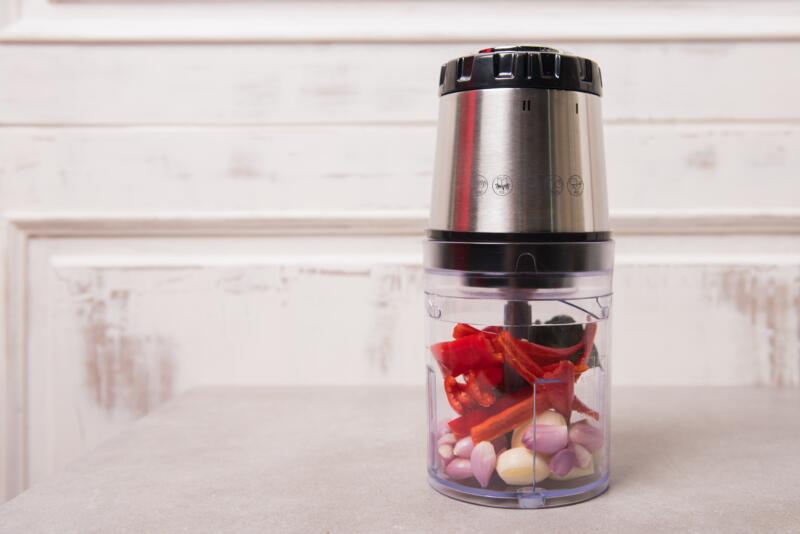
Ever considered a food mill for mashing potatoes? This old-school gadget might just become your new best friend in the quest for smooth mash.
But be warned, just like with a food processor, there’s a fine line between perfect and paste.
To get it right, cook your potatoes until they’re as soft as a lullaby, then pop them into the mill.
Choose your weapon – usually the medium disc – and start cranking that handle. But remember, keep a keen eye on the texture to avoid crossing into gluey territory!
12. Using a Stand Mixer
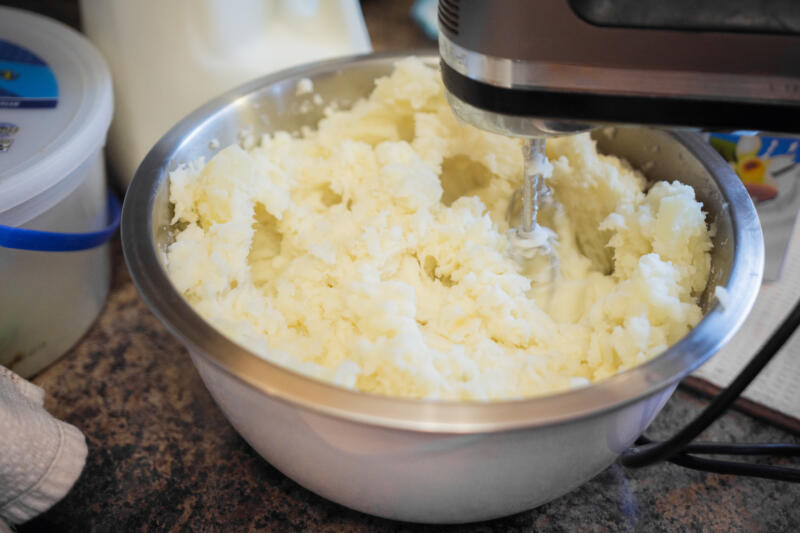
A stand mixer is a versatile tool that can also be used to mash potatoes.
With its powerful motor and various attachments, it can create a smooth and fluffy texture with ease.
To use a stand mixer, cook your potatoes until they’re soft. Next, after draining them, transfer the potatoes to the mixing bowl.
Begin with the paddle attachment at a low setting. As the potatoes begin to mash, slowly raise the speed.
Don’t forget to occasionally scrape the bowl’s sides to ensure even mashing of all the potatoes.
13. Mashing with a Whisk
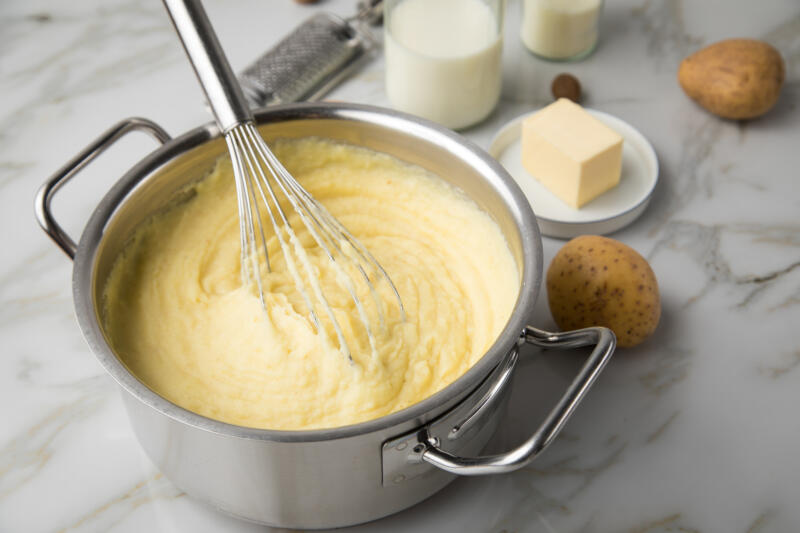
A whisk might not be the first tool you think of for mashing potatoes, but it can do the job quite well if it is sturdy enough.
This method is great if you want a less smooth, more textured consistency. Cook your potatoes until they’re soft, then transfer them to a large bowl.
Using a STURDY whisk, mash the potatoes until you reach your desired consistency.
The result will be a rustic, homey mash that’s full of character.
14. Using a Sieve or Colander
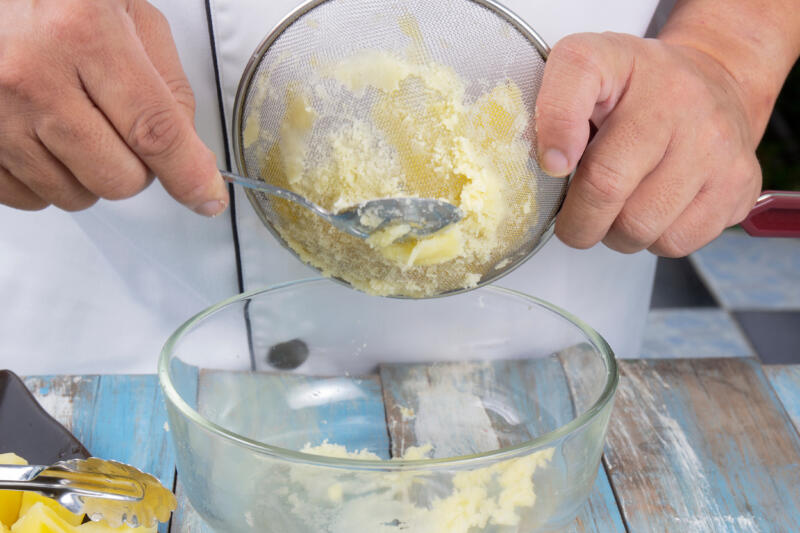
For a super smooth and fine texture, a sieve or colander can be your secret weapon.
This method involves pushing your cooked potatoes through the small holes of a sieve or colander, resulting in a fine, almost fluffy texture.
To do this, cook your potatoes until they’re very soft.
Then, place a sieve or colander over a large bowl and push the potatoes through using the back of a spoon.
The result is a smooth, fine mash that’s perfect for elegant gourmet dishes.
Flavoring and Finishing Touches
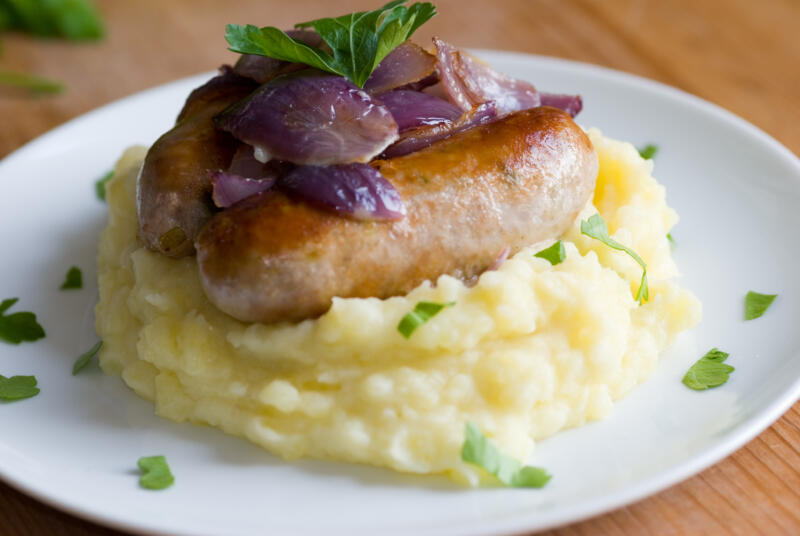
Mashed potatoes are like a blank canvas, ready to be painted with flavors.
With the right touch of ingredients and seasonings, you can turn this basic side dish into a star on the plate.
Let’s dive into different ways to enhance your mashed potatoes.
Adding Seasonings
Seasonings are the soul of any dish, and mashed potatoes are no exception.
While salt and pepper are the classic choices, don’t be afraid to experiment with different herbs and spices.
Mashed potatoes infused with herbs are wonderfully complemented by the addition of parsley, dill, and basil, as suggested by Martha Stewart.
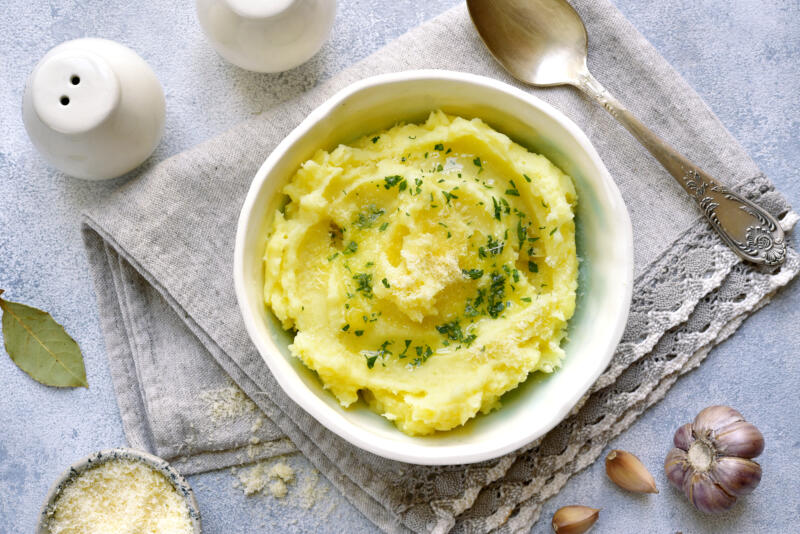
You can also enhance the flavor profile by incorporating chives, rosemary, thyme, sage, or garlic powder into your recipe.
If you’re seeking a more robust flavor, consider infusing the warming milk with a single bay leaf, but don’t forget to remove it prior to mashing the potatoes.
A dash of nutmeg can also offer a unique twist to the traditional taste of your mashed potatoes.
Including Dairy Ingredients
Infusing dairy components such as butter, milk, or cream can elevate the taste and texture of your mashed potatoes, giving them a luxurious richness and velvety smoothness.
Initiate the process by introducing a substantial amount of butter while mashing the potatoes.
Subsequently, blend in milk or cream in a gradual manner until you achieve the consistency that suits your palate.
The outcome? A bowl of creamy, delectable mashed potatoes that dissolve delightfully in your mouth.
Adding Parmesan Cheese
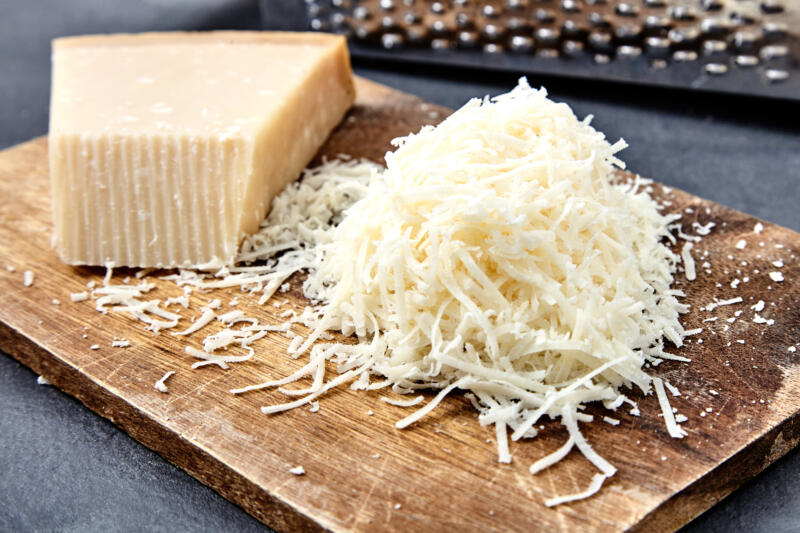
Incorporating Parmesan cheese into your mashed potatoes can introduce a delightful salty edge and a depth of flavor that elevates the dish to a new level.
As per Gordon Ramsay’s culinary approach, the key is to grate the Parmesan finely and stir it in while the potatoes are still hot, allowing the cheese to melt seamlessly into the mash.
This not only infuses the potatoes with a subtle saltiness but also imparts a unique umami flavor that makes the dish irresistibly delicious.
Incorporating Other Ingredients such as Olive Oil or Garlic
For an extra flavor boost, consider incorporating other ingredients like olive oil or garlic into your mashed potatoes.
A drizzle of olive oil can add a subtle, earthy flavor, while minced garlic can give your dish a fragrant and delicious twist.
Feel free to unleash your creativity and play around with various taste pairings.
Closing Thoughts
We’ve explored a variety of methods for mashing potatoes without a masher, each with its own unique benefits.
Whether you prefer a smooth and creamy texture or a chunkier, rustic feel, there’s a method for you.
But remember, the key to great mashed potatoes lies not only in the method used but also in the quality of the potatoes and the flavorings added.
So, why not give these methods a try and see which one works best for you?
And don’t forget to share your experiences, ask questions, or provide additional tips in the comments section.